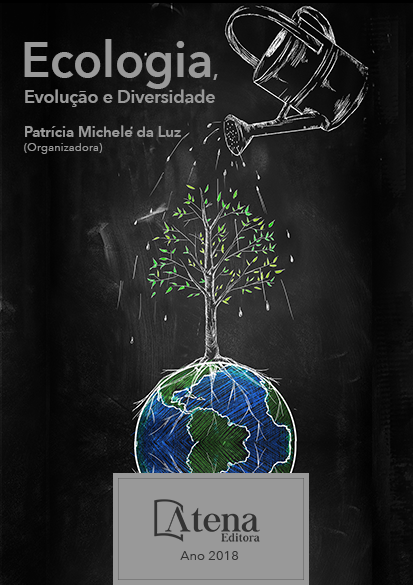
COMPOSIÇÃO E SELEÇÃO DE MESOHABITATS POR AVES AQUÁTICAS EM TRECHOS DO RIO ITAPECERICA, NO MUNICÍPIO DE DIVINÓPOLIS, MINAS GERAIS
Alterações relacionadas a urbanização causam perturbações principalmente em hábitats aquáticos, afetando a dinâmica e diversidade de espécies. As aves aquáticas são aquelas que dependem direta ou indiretamente de ambientes úmidos para suas atividades biológicas e essas apresentam diferenças no uso e estratégias de forrageamento. O objetivo do presente estudo foi inventariar e avaliar a distribuição de espécies de aves aquáticas em diferentes trechos do rio Itapecerica em Divinópolis, MG. O estudo consiste em observações diretas em pontos fixos em quatro áreas amostrais ao longo do rio. Foram realizadas aletoriamente quatro visitas mensais, de agosto a dezembro/2016 e janeiro a julho/2017 no período matutino das 07h00min às 11h30min e vespertino das 13h00min às 18h00min, havendo revezamento de horário (manhã/tarde). Foram registrados 1754 indivíduos, pertencentes a 21 espécies de aves aquáticas, distribuídas em nove famílias durante o período de agosto/2016 a julho/2017. As espécies com maior número de indivíduos registrados foram Nannupterum brasilianus representando (34,12%) do valor total, seguido por Egretta thula (18,54%) e Amazonetta brasiliensis (12,71%). O trecho do encontro dos rios obteve o menor número de indivíduos em relação aos demais, o que pode ser explicado pela a heterogeneidade do habitat. Os mesohabitats mais utilizados pelas comunidades de aves foram a região litorânea e as margens. O estudo pode ressaltar a importância das áreas verdes urbanas para manutenção das espécies de aves aquáticas, que utilizam dessas áreas para descanso e refúgios e ainda propor medidas de conservação de parques urbanos para manutenção da diversidade local.
COMPOSIÇÃO E SELEÇÃO DE MESOHABITATS POR AVES AQUÁTICAS EM TRECHOS DO RIO ITAPECERICA, NO MUNICÍPIO DE DIVINÓPOLIS, MINAS GERAIS
-
DOI: Atena
-
Palavras-chave: Rios urbanos, Qualidade Ambiental, Aves.
-
Keywords: Urban Rivers, Environmental Quality, Birds.
-
Abstract:
Changes related to urbanization cause disturbances mainly in aquatic habitats, affecting the dynamics and diversity of species. Waterfowl are those that depend directly or indirectly on humid environments for their biological activities and these present differences in use and foraging strategies. The objective of this study was to inventory and evaluate the distribution of waterbird species in different stretches of the Itapecerica River in Divinópolis, MG. The study consists of direct observations at fixed points in four sample areas along the river. Four monthly visits were conducted randomly, from August to December/2016 and January to July/2017 in the morning from 07:00 to 11:30 and in the afternoon from 13:00 to 18:00, with a schedule of morning/afternoon. A total of 1754 individuals belonging to 21 species of aquatic birds were recorded in nine families during the period from August 2016 to July 2017. The species with the highest number of registered individuals were Nannupterum brasilianus (34.12%), followed by Egretta thula (18.54%) and Amazonetta brasiliensis (12.71%). The section of the rivers meeting had the lowest number of individuals in relation to the others, which can be explained by the habitat heterogeneity. The mesohabitats most used by the bird communities were the coastal region and the banks. The study may highlight the importance of urban green areas for the maintenance of waterbird species, which use these areas for resting and refuges and also propose conservation measures of urban parks to maintain local diversity.
-
Número de páginas: 15
- Thaynara Pedrosa Silva


